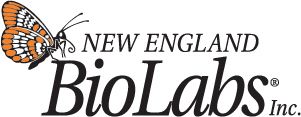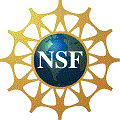Team:BU Wellesley Software/Acknowledgement
From 2011.igem.org
Acknowledgements
We would like to thank all of the following people and organizations for their comments, feedback, contribution, and support for our team:
Daniel Dwyer, Jim Collins, and the Collins Lab
Andrew Krueger, James Galagan, and the Galagan Lab
Gretchen Fougere, Assistant Dean of Outreach and Diversity
BBN Technologies
Aaron Aadler
JBEI
Josh Gilmore
JHU
Jef Boeke
Noah Young
MIT
Jonathan Babb and the Weiss Lab
Tiffany Huang, Louis Lamia and the MIT iGEM Team
Joy, Leanna, Paul, Shawn, and Shirley of the MIT iGEM team of 2010
Somerville High School
Chris Angelli
UC Berkeley
J. Christopher Anderson
Wellesley College
Catherine Summa
Wellesley College Science Center Summer Research
Yui Suzuki and the Suzuki Lab
Wyss Institute
Avi Robinson-Mosher








Attributions and Contributions
Computational team
We developed five software applications and deployed most of them in the wetlab. While this was a team effort, we point out key contributors to each of the five applications below:
G-nome Surfer Pro and E-Lab Notebook
This software was designed and constructed by the Human Computer Interaction Laboratory (HCI) at Wellesley College. Michael Lintz, Heidi Wang, Taili Feng, Casey Grote, and Megan Strait contributed to the design and implementation of the G-nome Surfer Pro application, whereas Kathy Liu, Michelle Ferreirae, Consuelo Valdes, and Kelsey Tempel contributed to the design of the E-Lab Notebook application.
Optimus Primer
This application was conceived by Traci Haddock (Instructor) and designed and implemented by Jenhan Tao. In parallel, a Microsoft Surface version was also developed by Kelsey Tempel, Casey Grote, and Consuelo Valdes of Wellesley College's HCI Lab.
Trumpet
This application was conceived by Swapnil Bhatia (Instructor) and designed and implemented by Craig LaBoda. The application implements two design algorithms, one of which was derived by Craig LaBoda and the other by Swapnil Bhatia. In parallel, a Microsoft Surface version was also designed by Michael Lintz, Michelle Ferreirae, and Alex Pan of Wellesley College's HCI Lab.
PuppetShow, and the Puppeteer Protocol Automation Stack
The Puppeteer Protocol Automation stack was conceived and designed by Swapnil Bhatia and graduate student Viktor Vasilev. The PuppetShow application was designed and implemented by Janoo Fernandes. Resource Management in the Puppeteer stack was implemented by Chenkai Liu. Python glue code was provided by Viktor Vasilev, and the Hardware Abstraction Layer was provided by Viktor Vasilev and Aaron Adler (BBN Technologies).
Wet lab team
The wetlab team helped the computational team design, implement, deploy, and test their applications.
PuppetShow, and the Puppeteer Protocol Automation Stack
The Puppeteer Protocol Automation Stack was tested in the wetlab on the Tecan Evo 150 robot with the help of Evelyn Orozco, who helped construct several genetic circuits from simple reporters to AHL detectors.
Clotho
All DNA samples used over the course of the summer were put into Clotho through the Batterboard Clotho application and through the Spreadit series of Clotho applications, by Vanessa Yanez and Margaux Canevari. Vanessa used Batterboard to input all of the physical DNA samples from the wet lab while Margaux used Spreadit Parts, Spreadit Features, and Spreadit Vectors to input the BioBrick names and DNA sequences attached to those samples. Kyle Jones and Alberto Purwada also met with Rishi Ganguly (graduate student), to give feedback to improve the user interface for Batterboard.
Outreach
The outreach plan was conceived by the entire team during a group discussion and implemented by Chenkai Liu and Shannon Harrington.
Lab organization
Kyle Jones and Alberto Purwada were the major contributors to the physical organization of various types of samples in the lab including plasmid DNA, gel extractions, ligations, and frozen glycerol stocks. Kyle also designed a spreadsheet for keeping track of samples, which was updated weekly by a different wet lab team member each week during the summer.
Optimus Primer
To study various TB transcription factors and their promoters, primers were designed to generate BioBricks of those parts by Kyle Jones, with Suma Jaini overseeing this process.
E-Lab Notebook
All six wet lab team members participated in multiple discussions on the desired tools and layout designs of the e-notebook as implemented by the HCI lab.
Part construction
The wet lab built new parts comprising various fluorescent proteins and promoters to generate a library of reporter circuits. Each member of the wet lab team contributed to this work under the guidance of Traci Haddock (instructor).
 "
"
